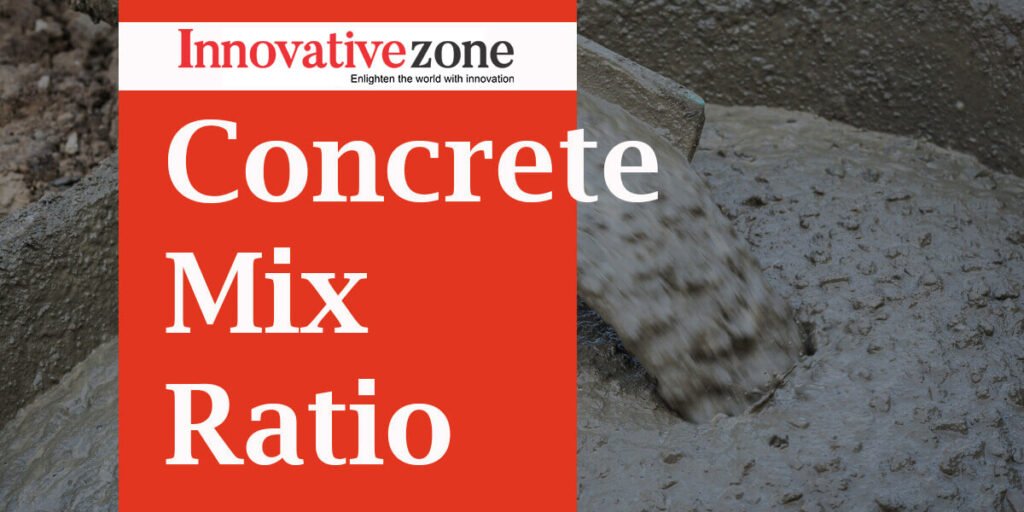Concrete has, over the years, etched itself as an indispensable material in the world of construction. Its popularity and widespread use can be attributed to its incredible strength, durability, and versatility.
However, the true strength of concrete doesn’t lie solely in its composition but rather in the careful balance of its components. This is where the concept of concrete mixing ratios comes into play – a topic that we will delve into throughout this blog post.
So, let’s get started
Unpacking Concrete Mixing Ratios
Concrete is the backbone of any construction project, and the secret to its strength lies in the correct mixing ratio.
But what exactly is a concrete mixing ratio
In simple terms, a concrete mixing ratio refers to the proportion of each component in a concrete mix – namely cement, sand, aggregate (gravel), and water.
This ratio significantly impacts the strength and durability of the concrete, dictating its overall performance in a construction project.
The Components of a Concrete Mix
Cement
This acts as a binder, holding all other parts together. It reacts with water to form a hard matrix that encapsulates sand and aggregates, creating a stone-like material: concrete.
Sand
Sand fills in the gaps between the aggregates and helps cement bind them effectively. Without sand, the concrete would be rough and hard to work with. The size, shape, and quantity of sand particles play a crucial role in the workability of the concrete mix.
Aggregates
Aggregates are often made of crushed stone or gravel and make up the bulk of the concrete mix. They provide volume at a low cost, occupying approximately 60-75% of the concrete volume.
Water
Water initiates the chemical reaction needed for cement to harden and bind the entire mix together. However, it’s a delicate balance – too much water can weaken the concrete, while too little can make it unworkable.
The Implications of Incorrect Mixing Ratios
Over-mixing
It can lead to a decrease in strength and durability of the concrete. When there’s too much cement in proportion to sand and aggregate, it can increase the risk of cracking.
Under-mixing
This might leave you with a weak and brittle structure. If there’s not enough cement to bind the sand and aggregate together, the resulting concrete will be porous and susceptible to water damage and weathering over time.
Letting the Mix Dry Out
Once mixed, concrete should be used quickly to prevent it from drying out and losing its strength. If your mix does start to dry, don’t add water as this can weaken the final product. Instead, it’s best to discard the batch and start afresh.
Step-by-Step Instructions to the Perfect Mix
1. Understand the Basic Concrete Mix Ratio
As previously discussed, a typical concrete mix involves cement, sand, aggregate, and water. The standard ratio is 1:2:3 – one part cement, two parts sand, and three parts aggregate. The amount of water required tends to vary, but a general rule of thumb is to use enough to create a mix that’s workable but not overly wet or dry.
2. Measure Carefully
Measure each component using identical units (like buckets or shovels) to maintain consistency. Always stick to the predetermined ratios for strength and durability.
3. Combine the Dry Ingredients
Start by combining the cement, sand, and aggregate. Mix these ingredients until they’re evenly distributed, creating a uniform color throughout.
4. Add Water Gradually
Add water slowly, mixing continuously, to prevent the formation of lumps. The mix should be workable, holding its shape when molded, without excess water bleeding out.
The Role of TMT Steel Bars in Concrete
When we delve into the realm of construction, an element that stands out for its importance and versatility is the Thermo-Mechanically Treated (TMT) steel bar. This integral building material plays a crucial role in fortifying the strength and durability of concrete structures.
So, make sure you use high-quality TMT steel bars. There are various reputed brands that provide the best TMT steel bars in Kerala and other regions. Bear in mind to get it from such brands.
Conclusion
In our journey through the complexities of concrete mixing ratios, we’ve certainly covered a lot of ground. We started by defining what a concrete mixing ratio is and how it directly influences the strength and durability of concrete. We understood that an ideal mix involves the right proportion of cement, sand, aggregate, and water, each playing its part in creating a strong and resilient concrete foundation.
As we wrap up this, let’s remind ourselves – the strength of a building lies in its foundation. And the key to a strong foundation? It’s all in the right concrete mix ratio. So, as you embark on your next construction project, keep in mind the knowledge you’ve gained here today.
Here’s to building better, stronger, and smarter!


